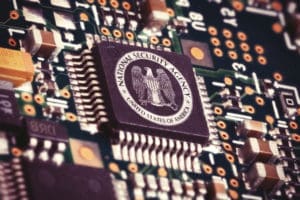 On February 27, 1976, a ground-breaking supercomputer was quietly decommissioned at the National Security Agency, with its story only to be told years later, once declassified. The one-of-a-kind Harvest computer—a special model of the IBM 7030, or Stretch—was specifically built for use by the NSA as it raced to pick up and decipher secret messages during the Cold War.
On February 27, 1976, a ground-breaking supercomputer was quietly decommissioned at the National Security Agency, with its story only to be told years later, once declassified. The one-of-a-kind Harvest computer—a special model of the IBM 7030, or Stretch—was specifically built for use by the NSA as it raced to pick up and decipher secret messages during the Cold War.
The NSA began using Harvest, or the IBM 7950, in 1962. Harvest was the work of a group of engineers led by James H. Pomerone. The computer weighed an estimated 75,000 pounds and was twice as big as the standard Stretch, making it IBM’s largest computer system to date. Harvest also had several other key differences from Stretch that made it powerful.
What set the Harvest computer apart
The machine had dual levels of program control, one to set up processes and one to operate those processes. Harvest also relied on the innovative Tractor tape cartridge library, which allowed it to transfer data at the rate of about 1.4 million characters per second. The tape cartridges were large—weighing about 15 pounds each and measuring 2 feet long—but Harvest could swap them out in no more than 18 seconds.
The programmers who maintained Harvest were not allowed to see its output. The Harvest printer was kept covered with a black cloth, and only NSA staff were allowed to access it.
Photo: Carsten Reisinger / Shutterstock
